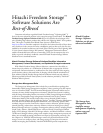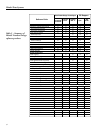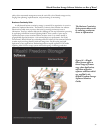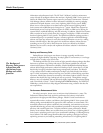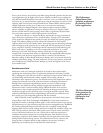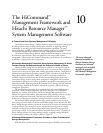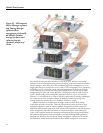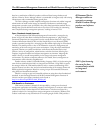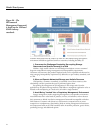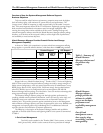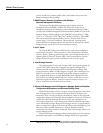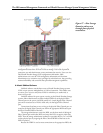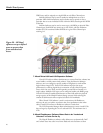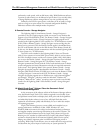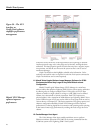
based on a combination of Hitachi products and best-of-breed storage hardware and
software. Likewise, Device Manager software is customizable to integrate easily with existing
infrastructures and accommodate future growth plans.
The Device Manager module simplifies management functions and enables integrated
administration of multi-vendor storage environments. Furthermore, standard storage
management operations come pre-loaded in the policy-based automation module. Device
Manager also provides definition tools and an easy-to-use GUI interface for automating
more complicated storage management processes, resulting in lowered TCO.
Open, Standards-based Approach
At the foundation of HiCommand Management Framework is a message bus (as
shown in Figure 26) that allows individual functional components to "plug and play."
Functional components are incorporated into the overall solution based on a usage of the
Common Information Model (CIM), and the Simple Object Access Protocol (SOAP)
provides a standard envelope for a messaging bus that enables simple plug-in of functional
modules. This model provides a clear set of information content for management and
monitoring of the entire storage and system environment. Using this object-model-based
approach, solutions can readily communicate with all network-attached devices and
perform a variety of configuration, administration, and other functions, allowing for a
complete, integrated hardware and software management environment. Adopting this
model is the key to overall interoperability in the storage and systems management
environments. If a solution component adheres to this model, then its management or
incorporation will be relatively straightforward.
Another industry standard, eXtensible Markup Language (XML), is fast becoming the
norm for data communication within an integrated environment. Using XML to express
the messages within the CIM model enables not only a common understanding of the
required content, but also a clear and universal understanding of the message format and
flexible application integration. Hitachi is creating an open and extensible architecture
using these two foundational standards.
Hitachi is creating an open and extensible architecture using these three foundational
standards. A more thorough discussion of the HiCommand Management Framework
initiative and the open industry standards can be found at
http://www.hds.com/pdf/PERI116-00_WhtPpr.pdf
CIM Benefits to Customers
CIM answers customers’ demands for interoperability, creating more functional
management applications and enabling customers and integrators to construct multi-vendor
solutions more easily. Vendor adoption of CIM becomes a critical success factor for a
product’s inclusion in a heterogeneous storage management environment. Without CIM,
vendors would need to swap and maintain an increasing tangle of APIs. CIM provides a
XML is fast becoming
the norm for data
communication within
an integrated
environment.
41
The HiCommand Management Fr a m e w o rk and Hitachi Re s o u r ce Manager System Management So f t w a re
HiCommand Device
Manager enables an
enterprise to manage
Hitachi Freedom Storage
products and software
solutions.



